THOMAS HART BENTON
and Hollywood
From October 10 through January 3, 2016
Nelson-Atkins Museum of Art
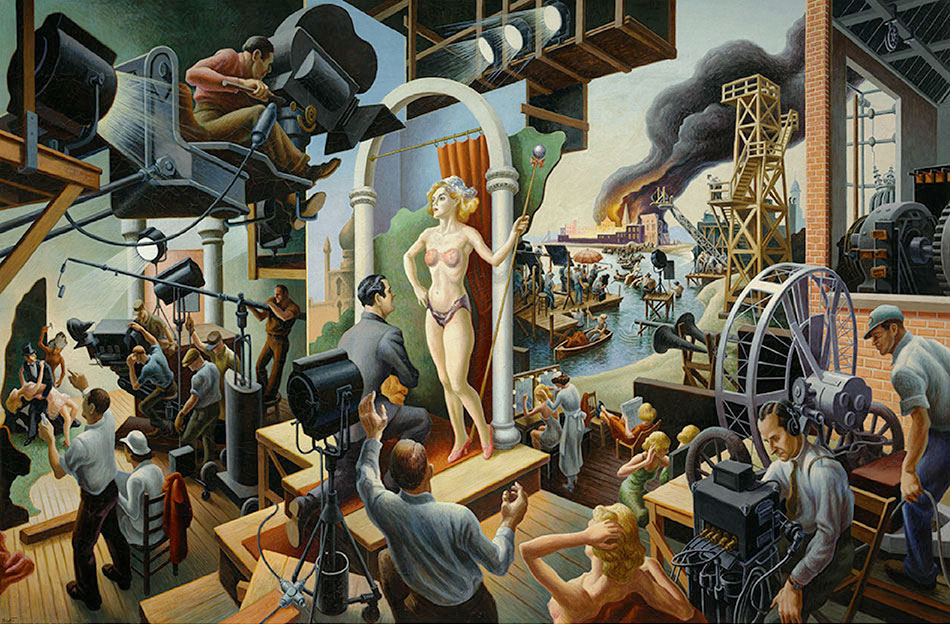 Thomas Hart Benton. Hollywood, 1937–38. Tempera with oil on canvas, mounted on panel 56 × 84 in. (142.2 × 213.4 cm) The Nelson-Atkins Museum of Art, Kansas City, Missouri, Bequest of the artist, F75-21/12. Photo by Jamison Miller. Art © T.H. Benton and R.P. Benton Testamentary Trusts/UMB Bank Trustee/Licensed by VAGA, New York, NY
Thomas Hart Benton. Hollywood, 1937–38. Tempera with oil on canvas, mounted on panel 56 × 84 in. (142.2 × 213.4 cm) The Nelson-Atkins Museum of Art, Kansas City, Missouri, Bequest of the artist, F75-21/12. Photo by Jamison Miller. Art © T.H. Benton and R.P. Benton Testamentary Trusts/UMB Bank Trustee/Licensed by VAGA, New York, NY
The first major exhibition dedicated to Thomas Hart Benton in more than 25 years takes a thematic rather than biographical approach to the artist’s career, revealing important but overlooked connections between Benton’s art, the movies, and visual storytelling in 20th-century America
This exhibition includes approximately 100 works by Benton: 50 paintings and murals along with a selection of his drawings, prints and illustrated books. In addition, throughout this exhibition, Benton’s art is paired with historic movie clips. These pairings present opportunities to explore how both Benton and filmmakers created engaging visual stories with popular appeal.
HIGHLIGHTS
The exhibition’s thematic sections—Presenting Benton, Modern Mythmaking, Creating an American Historical Epic, Hollywood Calling, Casting Characters, Painting World War II, Benton at Home and Benton’s Westerns—demonstrate the fascinating relationships between Benton’s art and movie making.
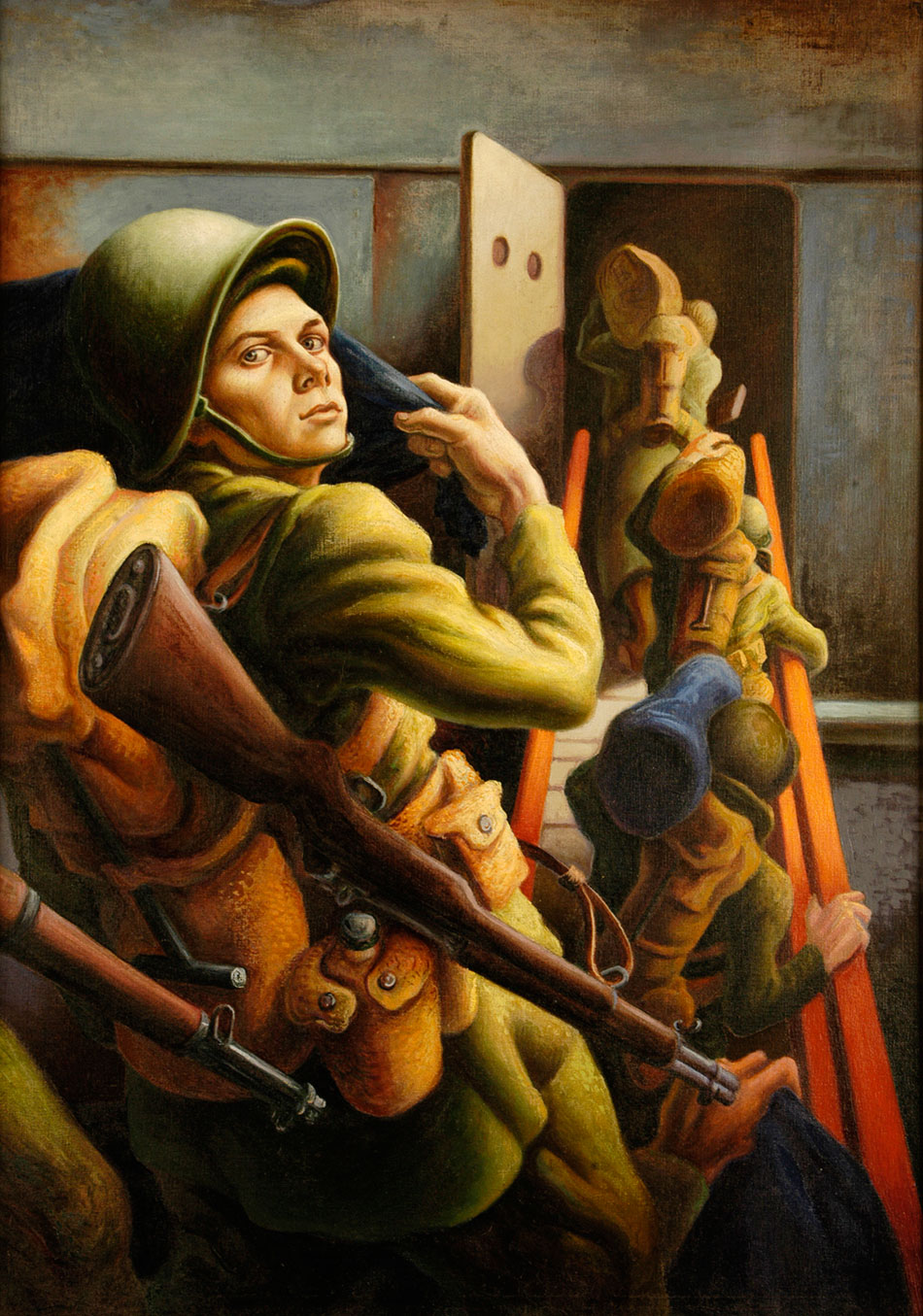 Thomas Hart Benton, Shipping Out, 1942.Oil on canvas 40 × 28 1⁄ 2 in. (101.6 × 72.4 cm). Property of the Westervelt Collection and displayed in the Tuscaloosa Museum of Art in Tuscaloosa, Alabama. Photo by Chip Cooper. Art © T.H. Benton and R.P. Benton Testamentary Trusts/UMB Bank Trustee/Licensed by VAGA, New York, NY
Thomas Hart Benton, Shipping Out, 1942.Oil on canvas 40 × 28 1⁄ 2 in. (101.6 × 72.4 cm). Property of the Westervelt Collection and displayed in the Tuscaloosa Museum of Art in Tuscaloosa, Alabama. Photo by Chip Cooper. Art © T.H. Benton and R.P. Benton Testamentary Trusts/UMB Bank Trustee/Licensed by VAGA, New York, NY
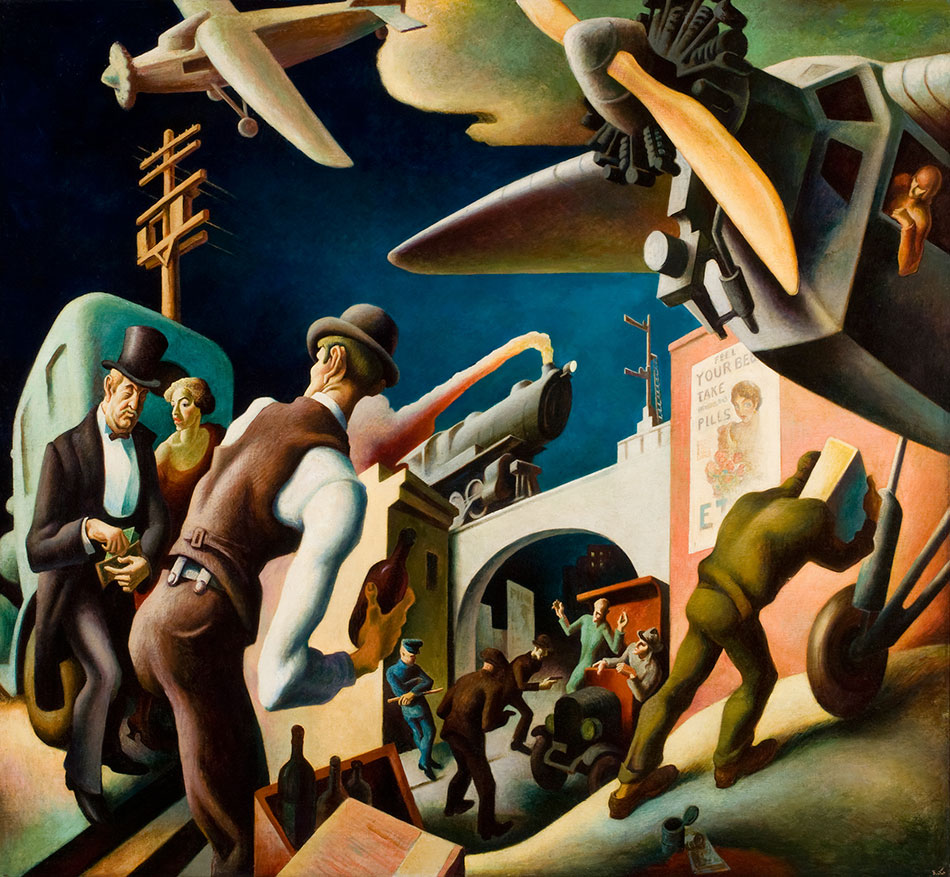 Thomas Hart Benton. Bootleggers, 1927. Egg tempera and oil on linen, mounted on Masonite panel, 68 3⁄4 × 74 3⁄4 in. (174.6 × 189.9 cm) Reynolda House Museum of American Art, Winston Salem, North Carolina, Museum purchase with funds provided by Barbara B. Millhouse, 1971.2.1. Courtesy of Reynolda House Museum of American Art. Art © T.H. Benton and R.P. Benton Testamentary Trusts/UMB Bank Trustee/Licensed by VAGA, New York, NY
Thomas Hart Benton. Bootleggers, 1927. Egg tempera and oil on linen, mounted on Masonite panel, 68 3⁄4 × 74 3⁄4 in. (174.6 × 189.9 cm) Reynolda House Museum of American Art, Winston Salem, North Carolina, Museum purchase with funds provided by Barbara B. Millhouse, 1971.2.1. Courtesy of Reynolda House Museum of American Art. Art © T.H. Benton and R.P. Benton Testamentary Trusts/UMB Bank Trustee/Licensed by VAGA, New York, NY
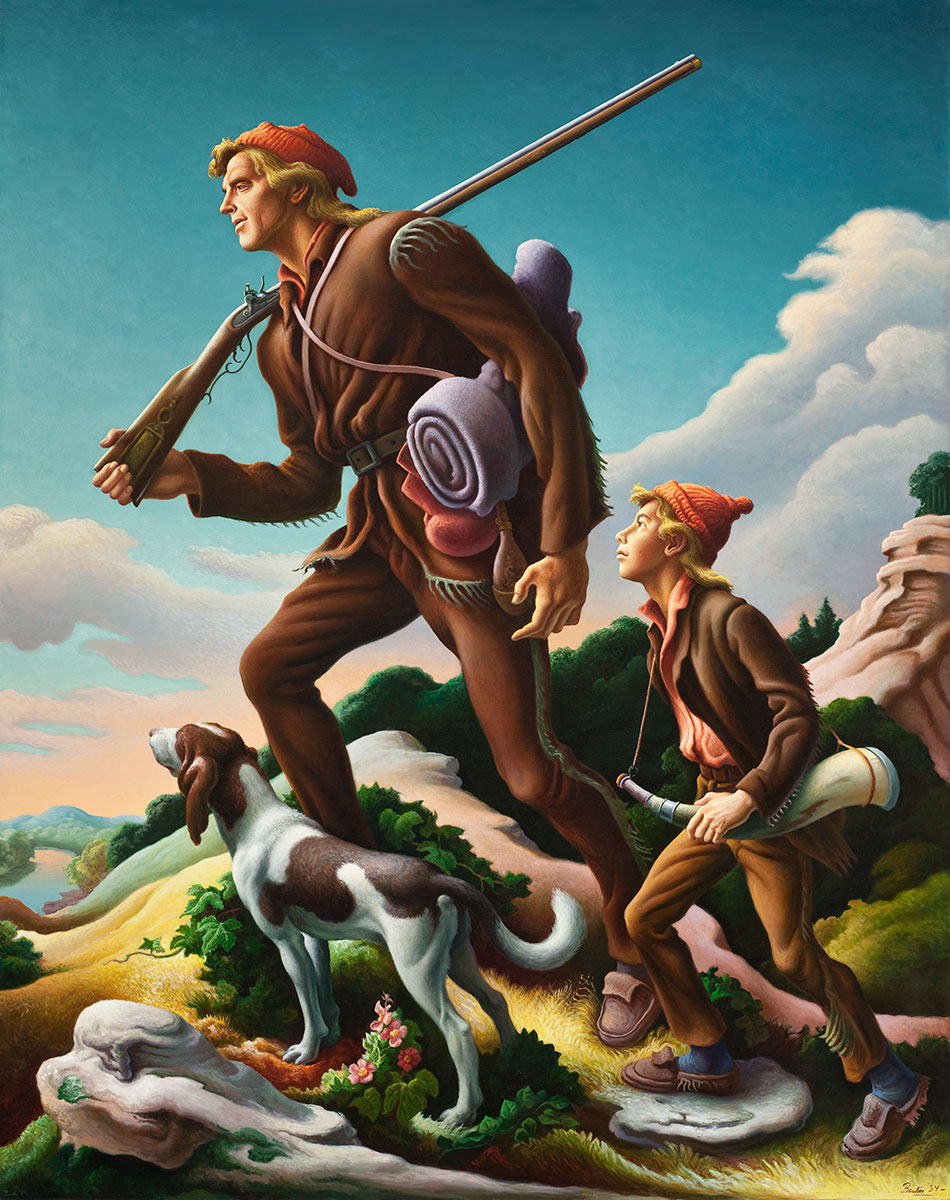 Thomas Hart Benton, The Kentuckian, 1954. Oil on canvas, 76 1⁄8 × 60 3⁄8 in. (193.3 × 153.4 cm), Los Angeles County Museum of Art, Gift of Burt Lancaster, M.77.115
Thomas Hart Benton, The Kentuckian, 1954. Oil on canvas, 76 1⁄8 × 60 3⁄8 in. (193.3 × 153.4 cm), Los Angeles County Museum of Art, Gift of Burt Lancaster, M.77.115
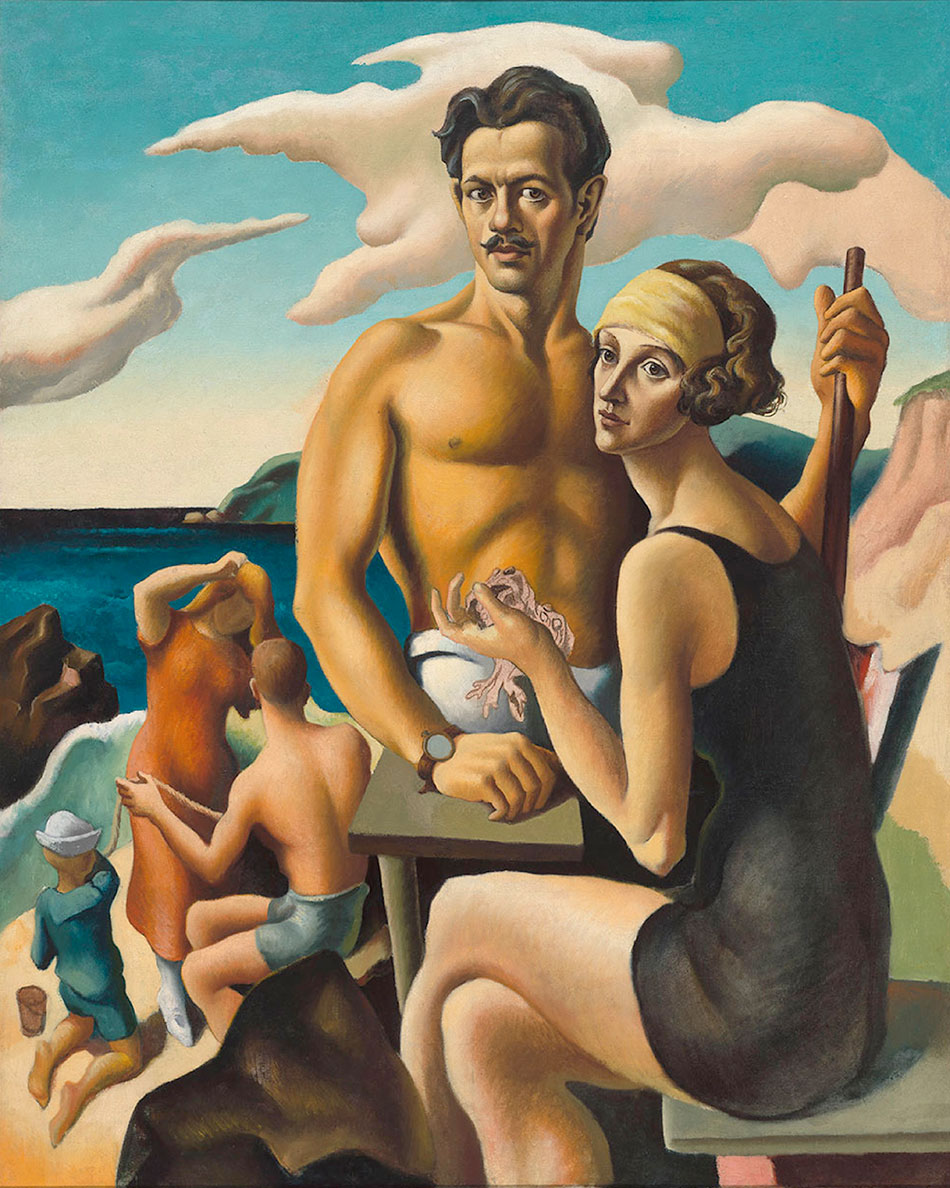 Thomas Hart Benton. Self-Portrait with Rita, c. 1924.Oil on canvas 49 × 39 3⁄8 in. (124.5 × 99.9 cm). National Portrait Gallery, Smithsonian Institution, Washington, Gift of Mr. and Mrs. Jack H. Mooney, NPG.75.30. Photo courtesy of National Portrait Gallery, Smithsonian Institution/Art Resource, NY. Art © T.H. Benton and R.P. Benton Testamentary Trusts/UMB Bank Trustee/Licensed by VAGA, New York, NY
Thomas Hart Benton. Self-Portrait with Rita, c. 1924.Oil on canvas 49 × 39 3⁄8 in. (124.5 × 99.9 cm). National Portrait Gallery, Smithsonian Institution, Washington, Gift of Mr. and Mrs. Jack H. Mooney, NPG.75.30. Photo courtesy of National Portrait Gallery, Smithsonian Institution/Art Resource, NY. Art © T.H. Benton and R.P. Benton Testamentary Trusts/UMB Bank Trustee/Licensed by VAGA, New York, NY

Thomas Hart Benton. Lewis and Clark at Eagle Creek, 1967. Polymer and tempera on Masonite panel, 30 1/2 x 38 in. (77.5 x 96.5 cm) Courtesy of the Eiteljorg Museum of American Indians and Western Art, Indianapolis, Indiana, 1989.2.10. Art © T.H. Benton and R.P. Benton Testamentary Trusts/UMB Bank Trustee/Licensed by VAGA, New York, NY
Around 1917, Benton worked on silent movie stage sets in Fort Lee, New Jersey—the first “Hollywood.” Between 1937, when Life magazine sent the artist to Hollywood on commission, and 1954, Benton painted five major works for projects related to motion pictures. This exhibition is the first to connect these experiences to the rest of the artist’s career. Benton was acutely aware of contemporary storytelling’s shift toward movies, and he achieved his greatest fame during the so-called golden age of Hollywood when more than two-thirds of Americans went to the movies weekly.

During the early 30s, American artists began a departure from the work of their European counterparts, instead looking to their own surroundings for inspiration. In 1934, TIME magazine gave a name to this trend: the “U.S. Scene” or “Regional art”. The corresponding article recognized Benton’s influence as a leader in the movement, and, appropriately, the cover featured Benton’s 1925 Self-Portrait.
Image:
TIME MAGAZINE
Issue December 24, 1934.
The artist’s process
A complementary installation to this exhibition opens Nov. 11 in Gallery 214. American Art–In Preparation includes a number of Benton’s preparatory studies to illustrate the artist’s process. This rotation is Andrew W. Mellon Undergraduate Curatorial Fellow Issac Logsdon’s curatorial debut.
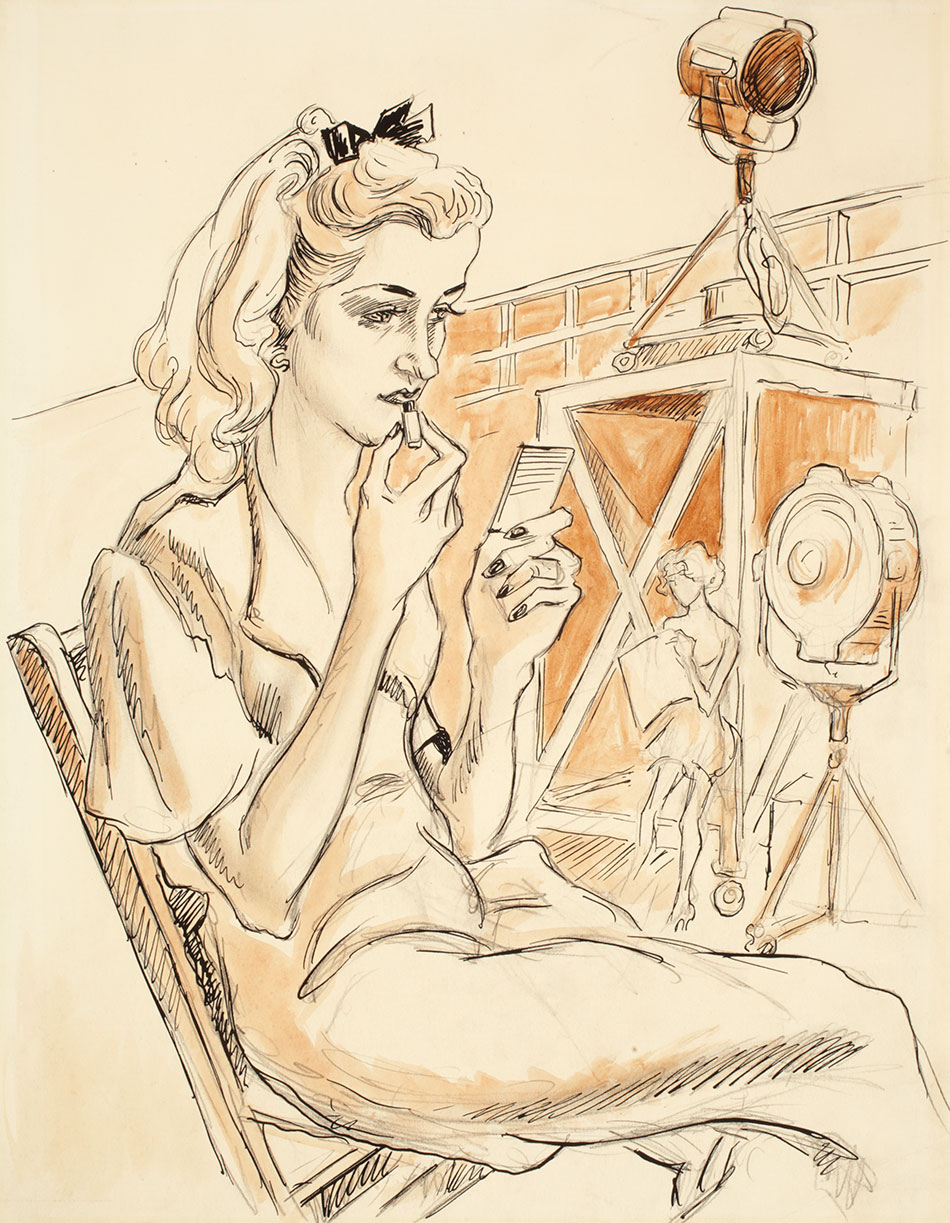 Thomas Hart Benton. Member of the Chorus, 1937. Ink, ink wash, and graphite on paper, 13 3⁄4 × 10 3⁄8 in. (34.9 × 26.4 cm). Private collection. Photo by Larry Ferguson Studio. Art © T.H. Benton and R.P. Benton Testamentary Trusts/UMB Bank Trustee/Licensed by VAGA, New York, NY
Thomas Hart Benton. Member of the Chorus, 1937. Ink, ink wash, and graphite on paper, 13 3⁄4 × 10 3⁄8 in. (34.9 × 26.4 cm). Private collection. Photo by Larry Ferguson Studio. Art © T.H. Benton and R.P. Benton Testamentary Trusts/UMB Bank Trustee/Licensed by VAGA, New York, NY
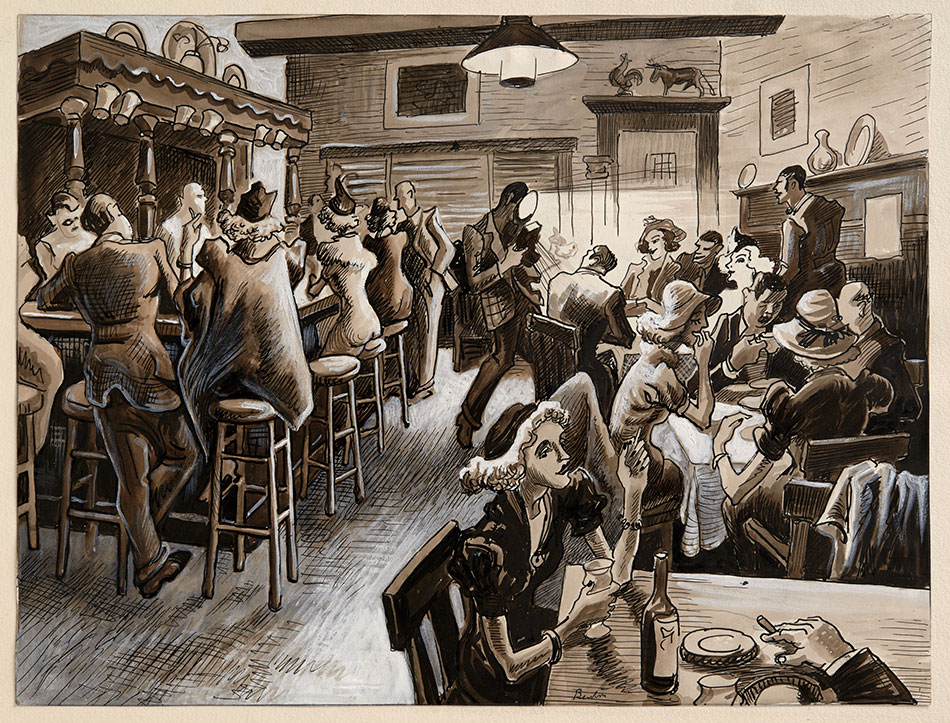 Thomas Hart Benton. Thursday Night at the Cock-and-Bull. It’s the Maid’s Night Out, 1937. Ink, watercolor, gouache, and graphite on paper, 12 5⁄8 × 16 3⁄4 in. (32.1 × 42.5 cm). Private collection. Photo by Larry Ferguson Studio. Art © T.H. Benton and R.P. Benton Testamentary Trusts/UMB Bank Trustee/Licensed by VAGA, New York, NY
Thomas Hart Benton. Thursday Night at the Cock-and-Bull. It’s the Maid’s Night Out, 1937. Ink, watercolor, gouache, and graphite on paper, 12 5⁄8 × 16 3⁄4 in. (32.1 × 42.5 cm). Private collection. Photo by Larry Ferguson Studio. Art © T.H. Benton and R.P. Benton Testamentary Trusts/UMB Bank Trustee/Licensed by VAGA, New York, NY
The largest collection of Benton’s works
The Nelson-Atkins holds the largest collection of Benton’s works, including the painting Hollywood, and his masterpiece, Persephone. Many of these works will be incorporated into the exhibition, American Epics, or will complement the show by being on display in the American Galleries.
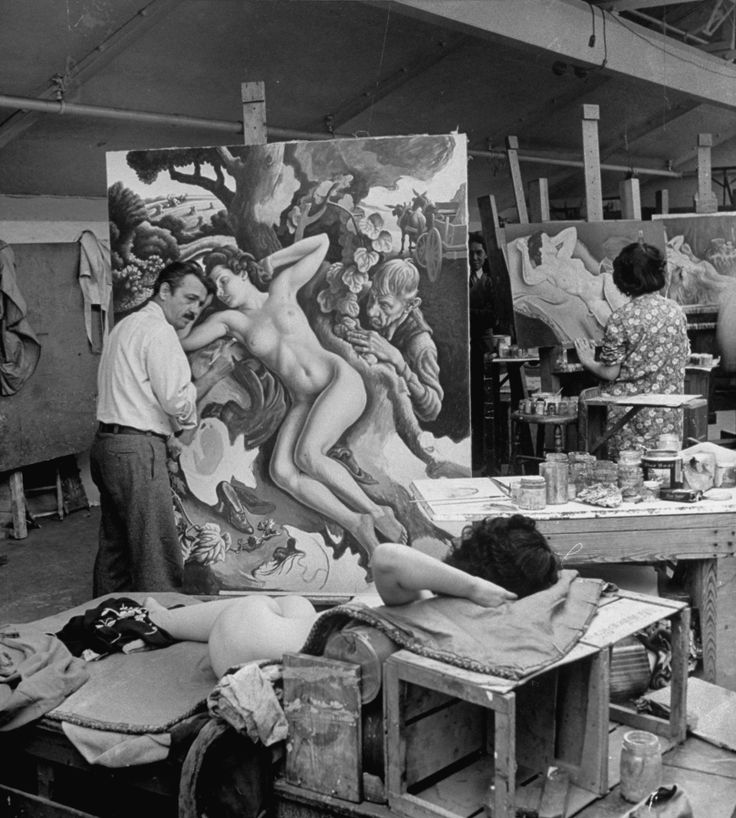 Tomas Hart Benson at his studio painting his masterpiece Persephone
Tomas Hart Benson at his studio painting his masterpiece Persephone
States
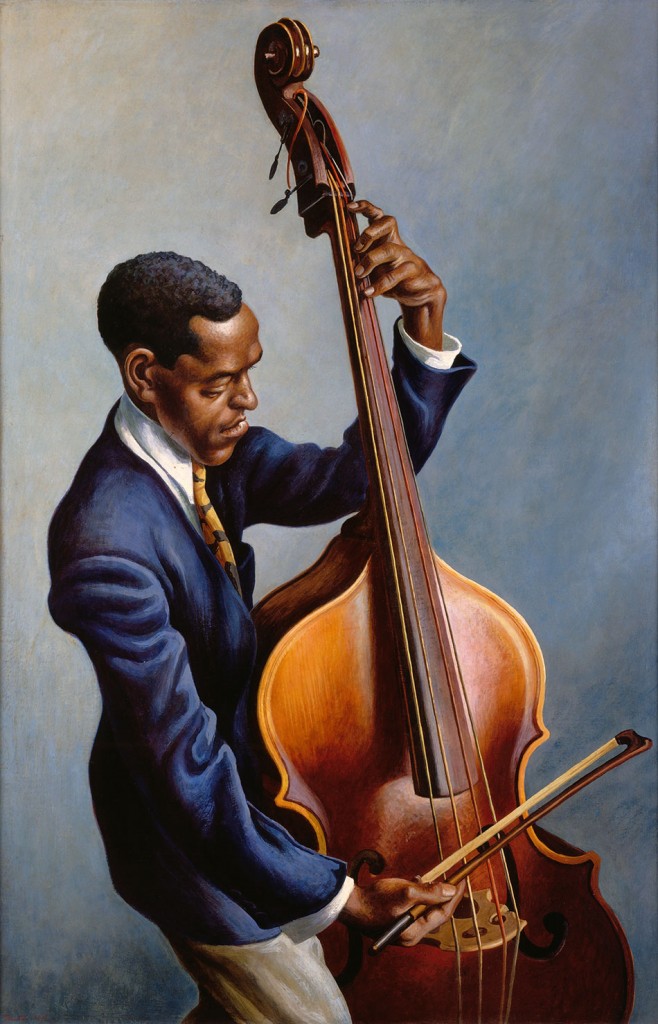 “This is an ambitious and fresh approach to the quintessential American artist Thomas Hart Benton that reveals important but previously overlooked connections between his art and the golden years of Hollywood,” said Julián Zugazagoitia, Menefee D. and Mary Louise Blackwell CEO & Director of the Nelson-Atkins.
“This is an ambitious and fresh approach to the quintessential American artist Thomas Hart Benton that reveals important but previously overlooked connections between his art and the golden years of Hollywood,” said Julián Zugazagoitia, Menefee D. and Mary Louise Blackwell CEO & Director of the Nelson-Atkins.
“For the first time, we are able to see the allure of Benton’s paintings as cinematic narratives in their content and composition.”American Epics: Thomas Hart Benton and Hollywood invites audiences to explore how artists and filmmakers create visual stories about artistic, cultural, and national identity.
“Concurrent with the so-called golden age of Hollywood, Benton developed a painting style that was cinematic in process, composition and content to express his interest in American people and American stories, broadly defined. His paintings and murals melded elements intrinsic to recent motion pictures with centuries-old European painting traditions that resulted in visually dynamic narratives. These qualities, in addition to Benton’s celebrity status as a nationally acclaimed artist, made his work especially alluring to both the public and Hollywood,” said Stephanie Fox Knappe, Samuel Sosland Curator of American Art at the Nelson-Atkins.
Picture: Thomas Hart Benton. Portrait of a Musician, 1949. Casein, egg tempera, and oil varnish on canvas, mounted on wood panel 48 1⁄ 2 × 32 in. (123.2 × 81.3 cm). Museum of Art and Archaeology, University of Missouri–Columbia, Anonymous gift, 67.136 Art © T.H. Benton and R.P. Benton Testamentary Trusts/UMB Bank Trustee/Licensed by VAGA, New York, NY
American Epics: Thomas Hart Benton and Hollywood
From October 10 through January 3, 2016
Hours: Wednesday, 10 a.m.–5 p.m. Thursday/Friday, 10 a.m.–9 p.m.
Saturday, 10 a.m.–5 p.m. Sunday, 10 a.m.–5 p.m.
A grant from the National Endowment for the Humanities allows free admission to
American Epics: Thomas Hart Benton and Hollywood on Thursdays from 5–9 p.m.
For museum information, phone 816.751.1ART (1278) or visit nelson-atkins.org.
The Nelson-Atkins is located at 45th and Oak Streets, Kansas City, MO.
* American Epics: Thomas Hart Benton and Hollywood was organized by the Peabody Essex Museum, Salem, Massachusetts, in collaboration with The Nelson-Atkins Museum of Art, Kansas City, and the Amon Carter Museum of American Art, Fort Worth, Texas.
Special Presentations
Saturday, October 10: Epic Thomas Hart Benton
2–3 p.m. Atkins Auditorium
Austen Barron Bailly, George Putnam Curator of American Art at the Peabody Essex Museum, Salem, MA, and Mary Schafer, Conservator, Paintings at the Nelson-Atkins, discuss Benton’s dynamic paintings to celebrate the opening day of the exhibition.
Saturday Matinees: American Epics
2 p.m. Atkins Auditorium
The museum screens three classic films connected with Benton’s artistic vision and highlighted in the exhibition. Introductions by noted film scholars precede each screening.
November 7: A Star is Born, 1937
November 14: The Grapes of Wrath, 1940
November 21: The Kentuckian, 1955
Sunday, November 15. Especial presentation
Thomas Hart Benton, Modern Art, and the Movies
2 – 3 p.m. Atkins Auditorium
Join Erika Doss, Professor, American Studies at the University of Notre Dame, as she discusses how the movies inspired Benton’s storytelling sensibilities and his dynamic painting style, and shaped his perspectives on public art and American history.
Third Thursday: Old Hollywood
Thursday, November 19
Your not-so-quiet night at the museum! Honoring the spirit of old Hollywood, November’s Third Thursday includes exhibition-related activities, performances and more.
Kansas City Remembers
Thomas Hart Benton: The Man and the Inspiration
Thursday, December 10
6 p.m. Lens 2
Hear six five-minute stories about Kansas City’s famous son from those who knew him or have been inspired by him. Then share your own thoughts and reflections with speakers and fellow participants during an intimate remembrance.
Image captions: Thomas Hart Benton, American (1889–1975). Hollywood
Sponsors
The national tour of this exhibition is sponsored by Bank of America.
In Kansas City, this exhibition is supported by Paul DeBruce, Shirley and Barnett C. Helzberg, Jr., the Committee of 100, the Marguerite M. Peet Museum Trust, John and Kay Callison, James B. Nutter & Company, the R.C. Kemper, Jr. Charitable Trust, UMB Bank, n.a., Trustee, Ann and Kenneth Baum, Henry W. Bloch, Nancy and Rick Green, Belger Cartage Service, Inc., the Barton P. and Mary D. Cohen Charitable Trust, the Hunt Family Foundation, the Sosland Foundation, the Thomas & Sally Wood Family Foundation, the Elizabeth C. Bonner Charitable Trust, the Nelson-Atkins docents and our Honorary Committee.
This exhibition was made possible in part by a major grant from the National Endowment for the Humanities: Celebrating 50 years of Excellence, with additional support from the National Endowment for the Arts. The exhibition is supported by an indemnity from the Federal Council on the Arts and Humanities.

Links
Nelson-Atkins Museum of Art